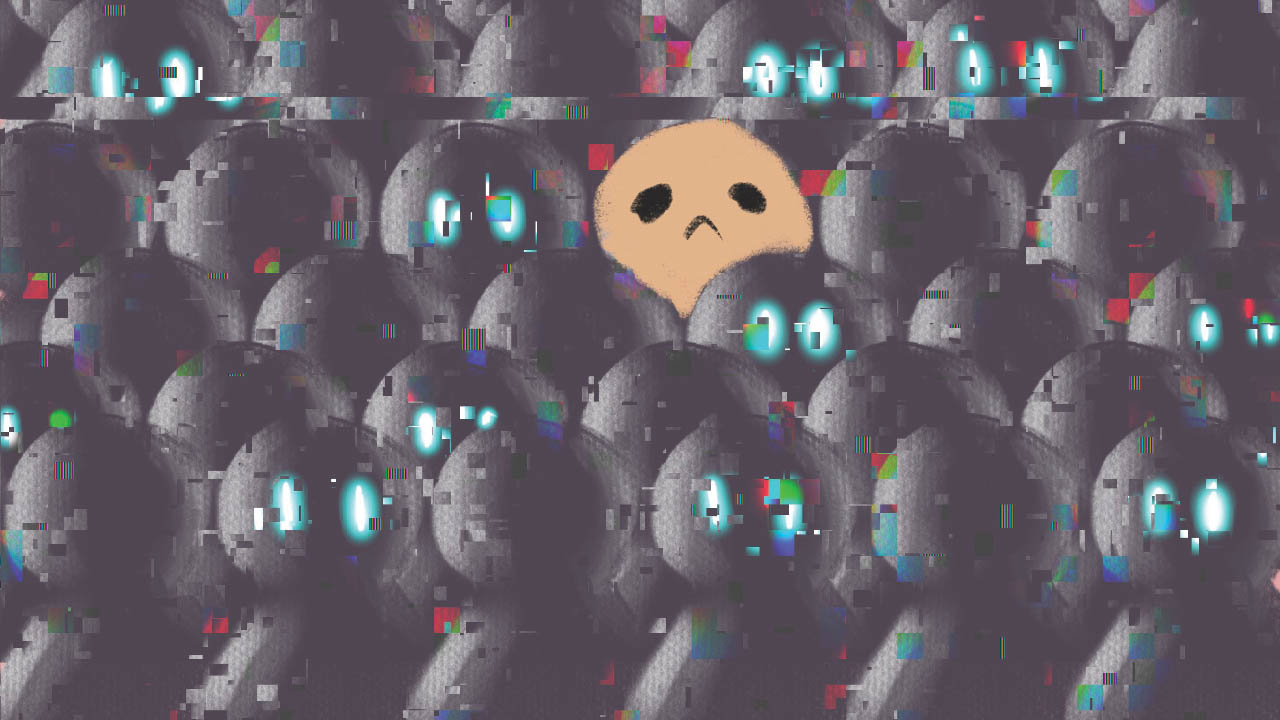AI is a perfect example of why we can’t have nice things
 CREDIT: NINA HEPPLEWHITE
CREDIT: NINA HEPPLEWHITEDefining what is and isn't art is a fool's endeavour, but AI art certainly isn't art.
If you use the Internet in any capacity, you’ve most likely heard about the recent rise in AI technology. It comes in a lot of forms, from chatbots like ChatGPT, art generators, deepfakes, voice generators, if you can think of it, there’s probably an AI for it. There’s even an AI for sorting out your trash called Oscar, which Fanshawe is currently implementing on its campus.
I won’t lie, I did get caught up in the AI craze for a bit. From the early days, with generators like DALL-E Mini, where you’d put something like “Popeye’s biscuit no drink” and you get what looks to be one of their famously dry biscuits in the kingdom of heaven. Or more recently with the AI voice generators, allowing people to make US presidents play Minecraft together. It’s good, clean fun.
Unfortunately, someone had to come along and ruin it for the rest of us. That’s right, I’m talking to you, tech bros! Other people ruined it too, but mostly you, tech bros!
Now, when I say “tech bro,” I don’t mean someone who is just into modern tech or is a computer science major. I mean someone who is fully on the Elon Musk Tesla train, got super into the blockchain, NFTs, Cryptocurrency, and probably pays for Twitter Blue. If this describes you, you may be a tech bro.
AI is capable of a lot of really great things as a tool. I use an AI tool that enhances audio for our podcast, as well as another AI tool to transcribe a lot of my interviews and videos. But as you get to the more complex AI such as ChatGPT and Stable Diffusion, the phrase “it’s just a tool” falls apart completely.
Take the art generators that have gotten popular. At the beginning, these image generators were using either a database with images and art from people who had consented to their work being used, or images in the creative commons in order to generate the images from entered prompts. But in time, other databases were created that just scrape the entire internet for any images that may match the prompt given.
What this means is that through the prompts, users can ask the AI to generate an image based on a specific artist and essentially create a new work. Where this gets fuzzy is the legality of taking bits and pieces from someone’s art and generating new art from it. Universally, artists do not like when you steal their art and claim it as your own, which is what a lot of people, myself included, believe AI art is doing.
I’ll make it clear here, I don’t believe AI art is art. Defining what is and isn’t art is a fool’s endeavour, because inevitably you’re going to make someone mad. But for me, art needs to have someone behind it for me to consider it art. And AI isn’t a “someone,” it’s a bunch of code.
ChatGPT has already seen use in writing academic essays as well. It’s not quite perfect, usually you’ll need to do a pass on the essay to make sure it all makes sense, but it takes a lot of the skill out of essay writing. It also puts an additional strain on teachers, as they now not only have to keep an eye out for plagiarism, but essays written by an AI as well.
In an ideal world, this would be used as a concept generating tool for art, writing, etc. But then I have to wonder, why not just hire someone who specializes in concepts? You’ll get a better product and a struggling artist gets paid.
The worst part about it are the people who are super into it. They shift the blame off themselves, “if not me, then someone else would do it” and that the technology is inevitable. Any morals or ethical concerns are thrown out the window in the name of advancement.
My partner is an artist, and he’s considered pursuing a different degree on many occasions because of AI. He thinks that people will eventually just replace artists with AI, because you don’t have to pay an AI. And I’m scared to think he may be right.
Editorial opinions or comments expressed in this online edition of Interrobang newspaper reflect the views of the writer and are not those of the Interrobang or the Fanshawe Student Union. The Interrobang is published weekly by the Fanshawe Student Union at 1001 Fanshawe College Blvd., P.O. Box 7005, London, Ontario, N5Y 5R6 and distributed through the Fanshawe College community. Letters to the editor are welcome. All letters are subject to editing and should be emailed. All letters must be accompanied by contact information. Letters can also be submitted online by clicking here.

















